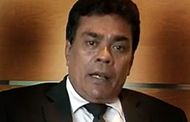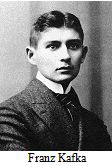

The strange riddle that the Magistrate’s Court of Colombo must now untangle is this: what is the plot that the Police Narcotic Bureau (PNB) was trying to hatch against the well-known Hultsdorf lawyer Gunaratne Wanninayaka and why was such a plot considered necessary in the first place? Perhaps the more important question is as to who was directing the PNB to do this. The natural question that follows is, whether the mover behind this plot is the same one that was behind the previous one that failed, which was the abduction attempt.
The answer, of course, is quite simple; the hidden director will never be revealed. This is indeed a Kafkaesque situation. At least that part is not very strange in Sri Lanka. Many people are faced with similar situations, although the agents who carry out such plots may vary from incident to incident. The general suspicion is that the director behind all such attempts is more or less one and the same.
The suspicion of Mr. Wanninayaka, as he told the Asian Human Rights Commission (AHRC) over the telephone, is that the visit of the two PNB officers to his home and the Magistrate’s Court premises was to implicate him in some serious crime. A few other lawyers that the AHRC has spoken to said that it is most likely that there was an attempt to plant some narcotics, either to implicate Mr. Wanninayaka directly, or indirectly through his driver.
These suspicions are supported by the failure on the part of the two PNB officers to provide a plausible explanation about their visits to his house and the courts where he practices. They tried to get away with the explanation that this was a matter of mistaken identity. However, when asked who they were really looking for, they were unable to reply.
In Sri Lanka the phrase ‘mistaken identity’ is rather terrifying. When a group of police officers from the Wattale police station arrested and brutally tortured Gerald Perera to the extent of causing renal failure, which placed him in a coma for over two weeks, their final explanation was ‘mistaken identity’. When he later challenged them about the mistreatment he endured, their next move was to assassinate him.
The dangers of taking the public interest seriously
That is the kind of situation that the lawyer Mr. Wanninayaka is in at the moment. Had the plot succeeded, it is not difficult to see what his predicament might have been; a charge for a non-bailable offence. Now that he has been able to uncover the plot, he faces the same problem as Gerald Perera did when he challenged his torturers. This is the kind of situation that many people are now facing in Sri Lanka. On the one hand, there are plots hatched against them; and on the other, if they were to expose and challenge those plots, they face an even worse situation.
Someone may well ask what Mr. Gunaratne Wanninayaka did to deserve such treatment from an agency of his government. The public record is that Mr. Wanninayaka is a reputed lawyer and that he takes the public interest seriously. In Sri Lanka, taking the public interest seriously is now treated as a heinous crime.
Such reactions to those who take public interest seriously expose the core of the political situation in Sri Lanka. The machinery of the security state, run by a hidden director, which operates through several government agencies, is aimed against those who manifest any sign of the possession of a public conscience. To remain silent in the face of blatant illegality and injustice is a requirement for anyone who wishes to be left ‘in peace’. The others face the option of ‘resting in peace’. The latest episode in this saga is the situation faced by the lawyer Mr. Wanninayaka, who publically stands up for lawyers, the independence of the judiciary and for free and fair elections.